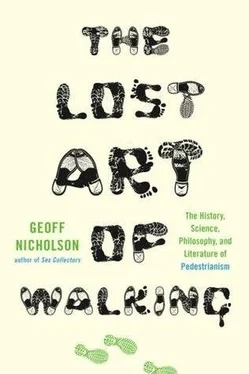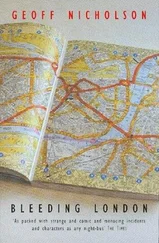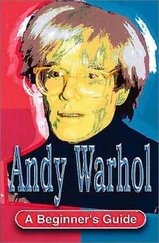The conditions also dictated the route. It was an interesting version of ‘the world’. Bensley was to visit over 150 towns in Britain, fifty or so in continental Europe, three in Canada, eight in the United States, four in the whole of South America, eight in South Africa, six in Egypt (though none in the rest of Africa), and a handful each in India, China, Australia, and New Zealand. It was precisely the sort of route a son of the British Empire might take. Whether Bensley actually took it is anybody’s guess.
He surely did go to some of the places dictated. A number of postcards were made depicting the iron-masked walker, and messages on the backs of the surviving ones indicate that Bensley covered at least some parts of England. Legend has it that he was arrested in Bexleyheath, in Kent, for selling his postcards without a license, and that he once sold one to King Edward VII for the staggering sum of five pounds. I find it hard to believe any king of England would pay one of his subjects so much for so little, but it’s a story that does him credit.
Whether Bensley went abroad is more doubtful. The final part of the legend has him in Genoa at the outbreak of the First World War, at which point he abandons the frivolous business of walking and enlists in the British army, to be invalided out a year later. In another version the start of hostilities moves Morgan to call off the bet, although since Morgan had died in 1913 this is a variant we can reasonably discount.
I suspect that Bensley wasn’t much of a walker, and certainly didn’t walk around very much of the world. Rather, he was a sort of showman and self-made fairground attraction, who had probably never set eyes on Morgan or Lonsdale. He’d turn up at gatherings around England on high days and holidays and make a spectacle of himself, be the center of attention, sell some postcards and pamphlets, then go on his way. The walking, or the claim to be a great walker, was a way of drawing a crowd, part of the shtick, like the baby carriage and the mask. He made a weird and wonderful sight, and sometimes I wonder if the whole exercise wasn’t just a photo opportunity, an excuse to make a zany postcard.
Bensley’s round-the-world walk was, I think, imaginary, and it existed not so much in Bensley’s imagination as in the minds of his public. Yes, Bensley was a sort of fake, a sort of con man, not a true walker, but he could see the appeal of being a great pedestrian, and although money was part of the equation, the invention of the walker in the iron mask must surely have appealed to some private need and fantasy of his. He is surely not a great walker, but he is one of the very greatest nonwalkers. His imaginary walking had a perfection about it that remained unassailed by reality.
♦
I realize that much of the above makes walkers appear to be a vain, duplicitous, lying bunch. Wasn’t walking, especially walking straight and tall, supposed to be synonymous with honesty and plain dealing? Well, only up to a point. Perhaps all great walks involve the imagination to some extent and contain a nagging element of self-dramatization and self-aggrandizement that may not have much to do with the facts. Perhaps if we’re in search of perfection we need to look for something more local and less ambitious.
I have found one walk that strikes me as perfect and perfectly honest, the more so because it is essentially modest and small scale, and doesn’t make any unnecessarily large claims for itself.
One Sunday afternoon in the summer of 1948, George de Mestral took a life-changing walk in the mountains of his native Switzerland. De Mestral was an inventor by trade and an enthusiastic weekend hiker. He and his dog walked all the time, and as they set off that day he had no reason to believe that this walk would be different from any of the others, and in truth the walk itself was unexceptional enough.
The walk took him through brush and undergrowth, and when he got home he began the tedious process of removing the cockleburs that had attached themselves to his clothes and his dog’s coat. Again, this was a common experience — it happened every time he walked. This time, however, as he picked off the burs he found himself wondering, as he’d never wondered before, just why they stuck so firmly.
He took one of the cockleburs to his study, put it under a microscope, and made the discovery that changed his and, to a strictly limited extent, all our lives. He saw that the burs had hooks on them, and these hooks attached themselves to the fibers of his clothes and to the coat of his dog. He thought there must be some practical application for such a hook-and-loop system. There was. George de Mestral had made the discovery that enabled him to invent Velcro. The rest is social history.
De Mestral’s walk has a modest perfection about it. Something local and quotidian becomes the source for something ubiquitous, if not, in the more grandiose sense, universal. It’s the simple domesticity that’s so appealing. Almost none of us will ever know what it’s like to walk on the moon or the North Pole. We won’t walk around the world or across continents, we won’t complete a 10,000- or even a 6,000-kilometer march. But most of us can imagine, and aspire to, a short walk in familiar territory that might provide us with our great idea, our great moment of inspiration.
And for a writer that’s especially alluring. We know that when William Wordsworth was in the throes of composition he would stride up and down the garden path outside his home in Grasmere — walking and writing had for him become synonymous. And I do believe that there’s some fundamental connection between walking and writing. In the broadest sense I’ve always found walking to be inspiring. When I need to solve a problem that’s arisen in something I’m writing, to work out a plot point, to decide what character A might say or do if she found herself in a room with character Z, then going for a walk will usually clarify matters. The pace of words is the pace of walking, and the pace of walking is also the pace of thought.
Both walking and writing are simple, common activities. You put one foot in front of the other — you put one word in front of another. What could be more basic than a single step, more basic than a single word? Yet if you connect enough of these basic building blocks, enough steps, enough words, you may find that you’ve done something special. The thousand-mile journey starts with the single step — the million-word manuscript starts with a single syllable.
With writing as with walking you often find that you’re not heading exactly where you thought you wanted to go. There’ll be missteps and stumbles, journeys into dead ends, the reluctant retracing of your steps. And you have to tell yourself that’s just fine, that it’s a necessary, and not wholly unenjoyable, part of the process. It’s an exploration.
Even the most determined and committed walker finds that there are certain walks he always intends to take yet never quite does. For instance, I have always meant to walk the length of the River Thames in London, crossing from one side to the other each time I encounter a bridge. In New York, I fully intend to walk the entire length of Broadway, but have never quite got around to it. A walk along the Great Wall of China remains an ambition, and not an unrealizable one. None of these is a particularly original or unusual walk — they have all been done many times by others. But that shouldn’t be a reason for me not to do them. And I tell myself there’s plenty of time. I have plenty of years ahead of me, perhaps I will do these walks after all. Still, it is one of the intimations of mortality to realize that we only have a certain number of walking miles in us. There are walks we simply won’t make. We’re guaranteed to end our walking days with certain routes and paths still untrodden.
Читать дальше












